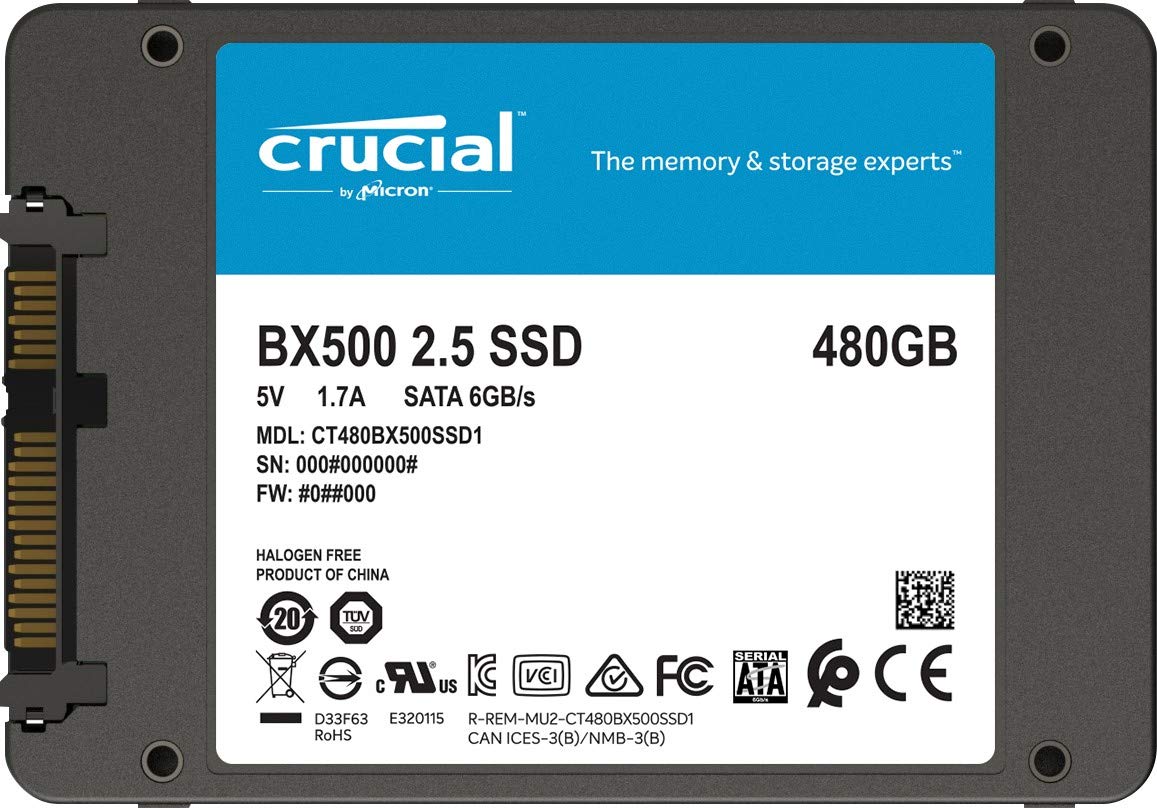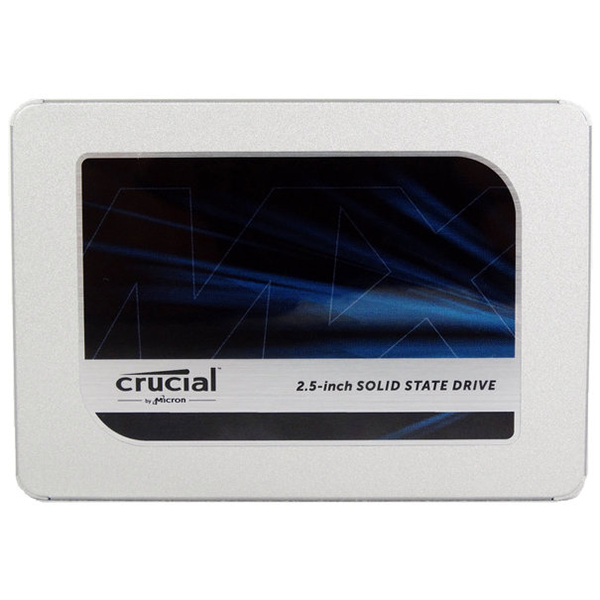Lexar NS200 SATA SSD Review: Plain Jane SATA
Why you can trust Tom's Hardware
1TB Performance Results
Comparison Products
We pitted the Lexar NS200 against its near-identical twin and one of the highest-value based SSDs in the market, the Crucial MX500. As well, we threw Samsung’s premium-cost 860 EVO into the mix and Intel’s 545s with the slightly newer SM2259 controller powering it. We also threw in WD’s Blue 3D SSD and Crucial’s DRAMless BX500 which utilizes Silicon Motion’s SM2258XT controller. Additionally, all feature 3D TLC NAND flash, except for one. We also included Intel’s 1TB 660p for our application comparisons as we lack 500GB sample to compare directly. It comes with Intel’s 3D QLC NAND and is powered by an SMI SM2263 NVMe controller.
Game Scene Loading - Final Fantasy XIV
The Final Fantasy XIV StormBlood benchmark is a free real-world game benchmark that easily and accurately compares game load times without the inaccuracy of using a stopwatch.
Lexar’s NS200 display’s some very impressive game load performance. With a total load time of 21.99 seconds, the NS200 powers to second place in our comparison pool. We can also see that it is significantly faster than an HDD and not too much slower than Intel’s 660p.
Transfer Rates – DiskBench
We use the DiskBench storage benchmarking tool to test file transfer performance with our own custom 50GB block of data. Our data set includes 31,227 files of various types, like pictures, PDFs, and videos. We copy the files to a new folder and then follow up with a reading test of a newly-written 6.5 GB file.
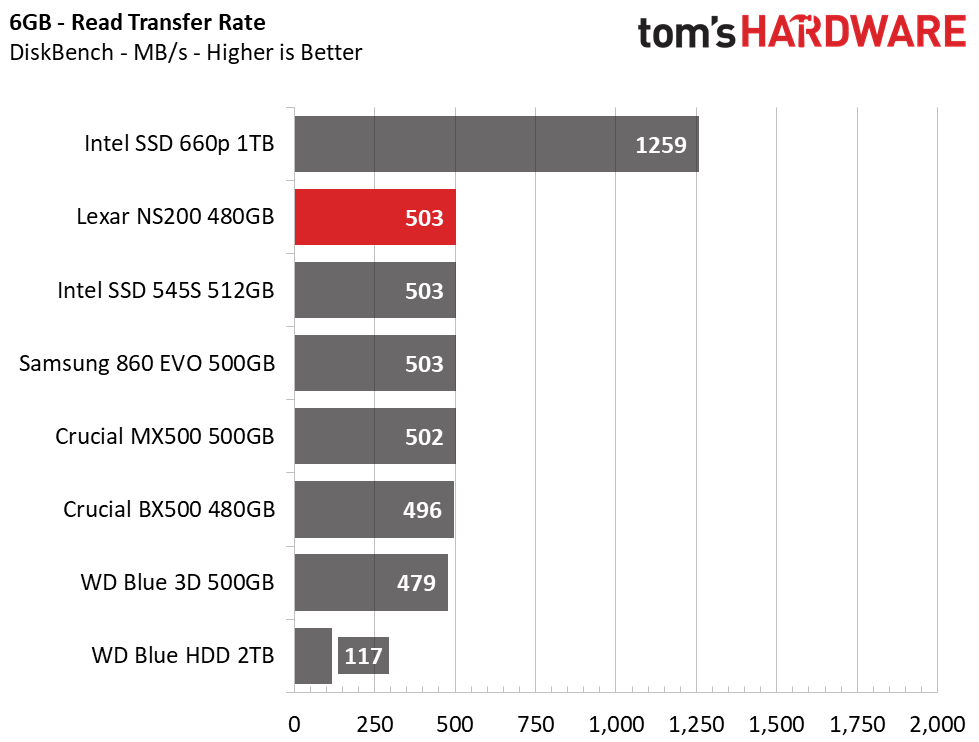
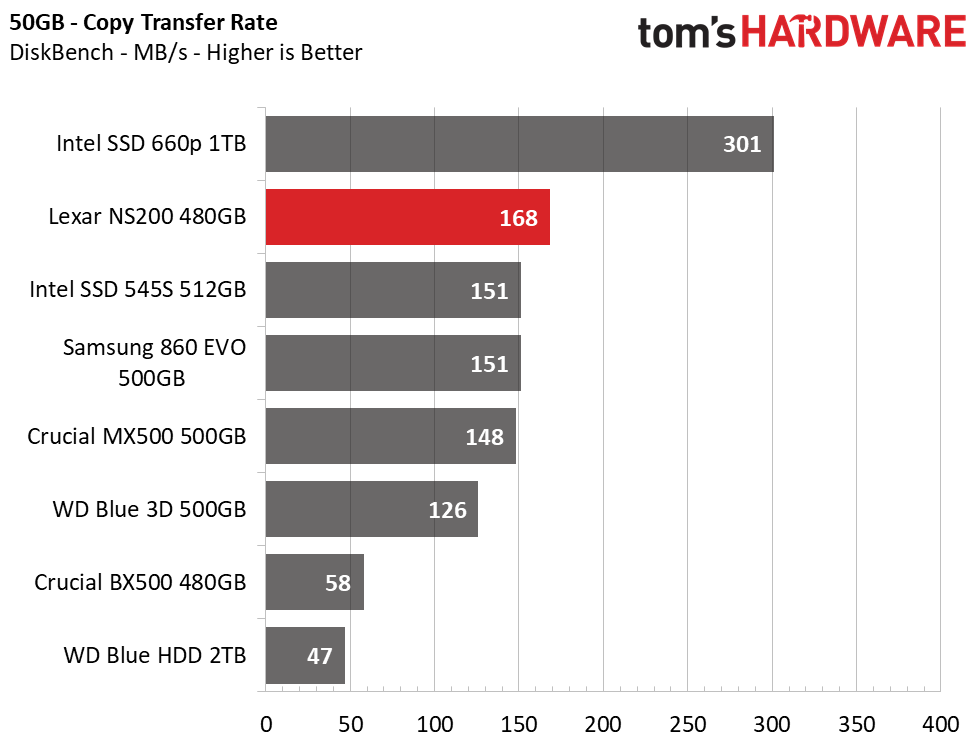
Again, the NS200 powers to second place, displacing the more expensive Intel SSD 545s and Samsung 860 EVO with a data rate that is 17 MBps faster. Compared to the low-end BX500 and WD Blue HDD, Lexar’s NS200 is about three times faster at file copies. Read performance ties Samsung and Intel too, with a rate of 503 MBps SATA performance doesn’t get much better than this. Still, Intel’s 660p takes the win, outperforming the whole group with its NVMe goodness.
Trace Testing – PCMark 8 Storage Test 2.0
PCMark 8 is a trace-based benchmark that uses Microsoft Office, Adobe Creative Suite, World of Warcraft, and Battlefield 3 to measure the performance of storage devices in real-world scenarios.
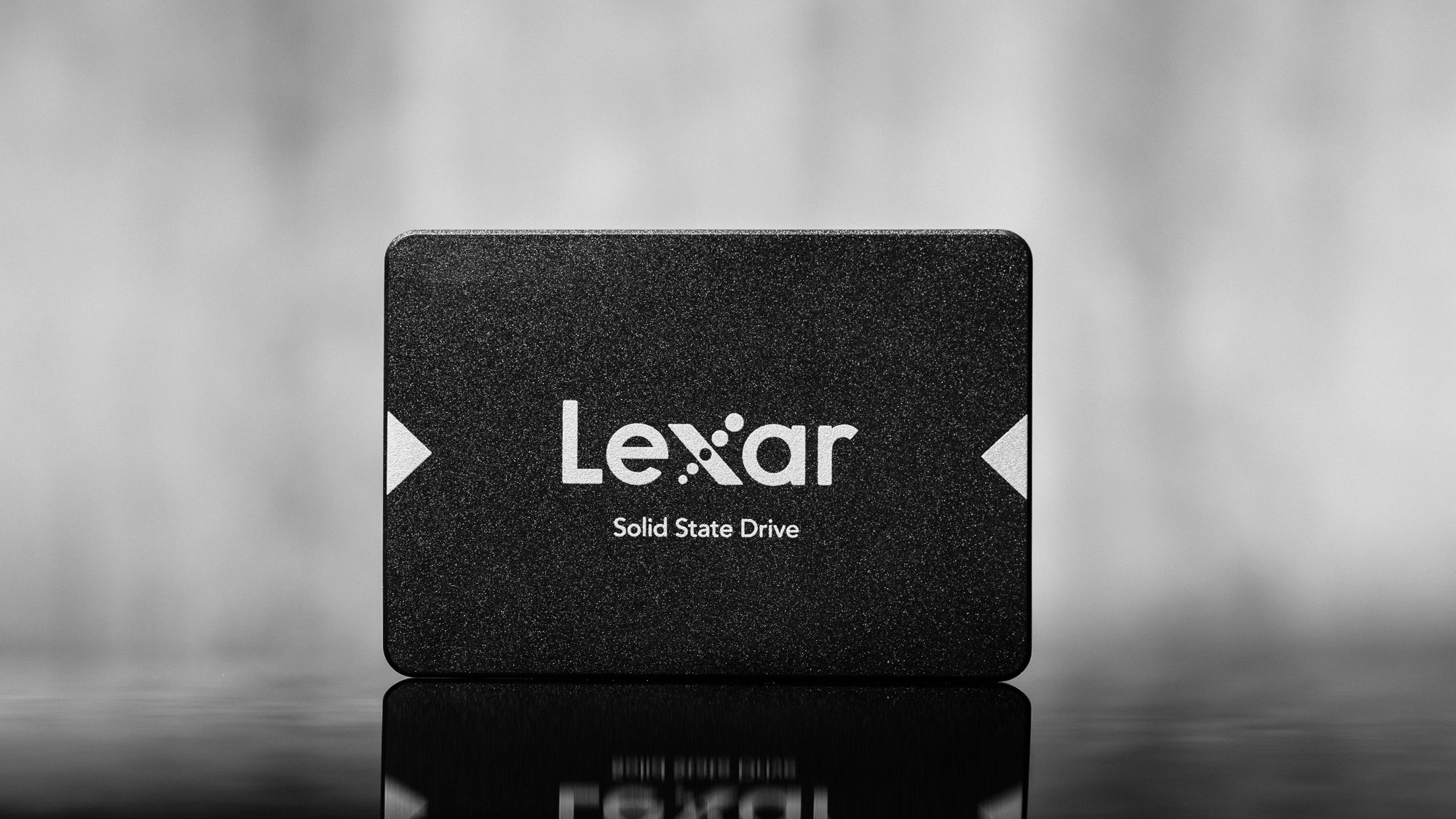
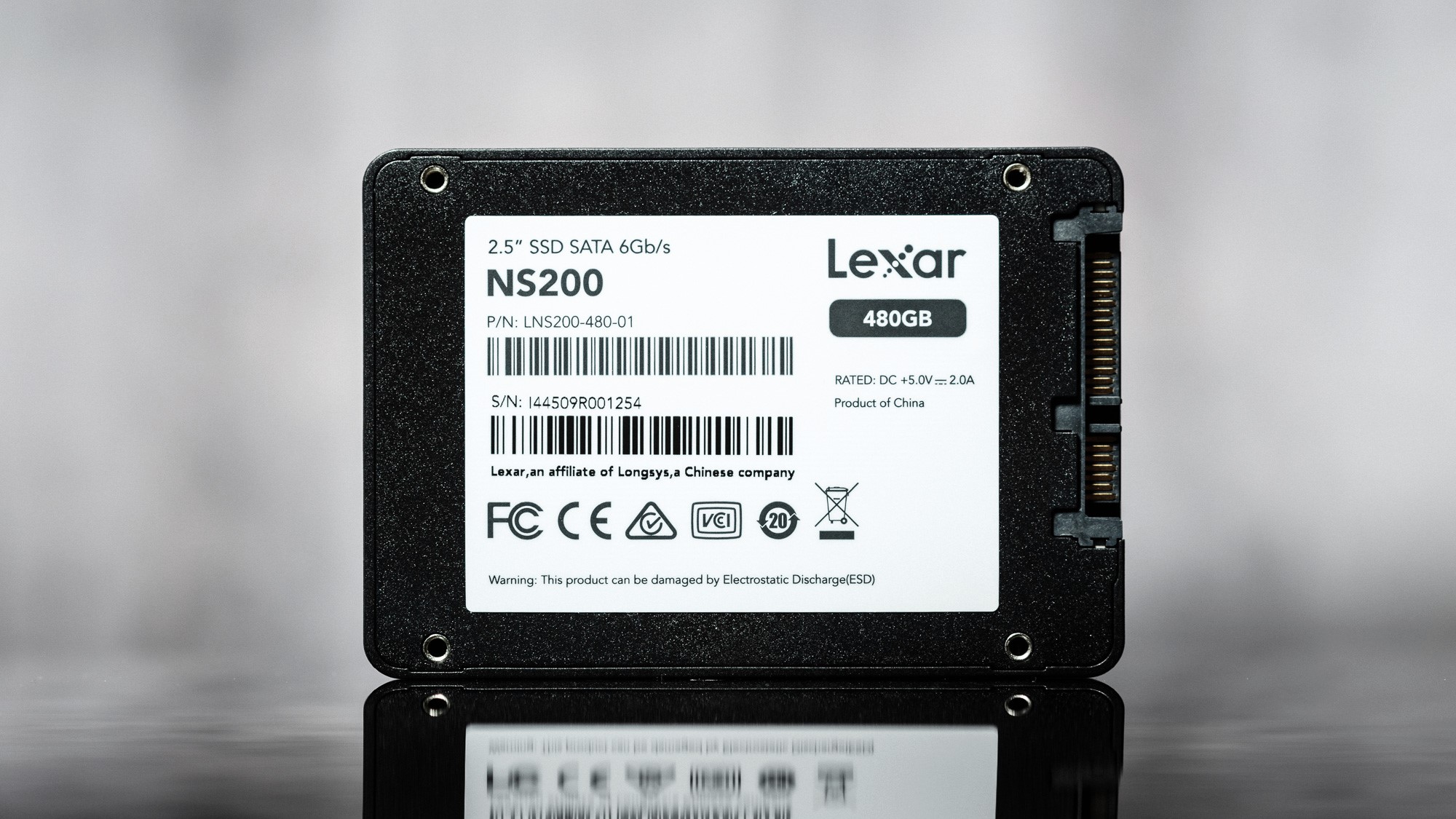
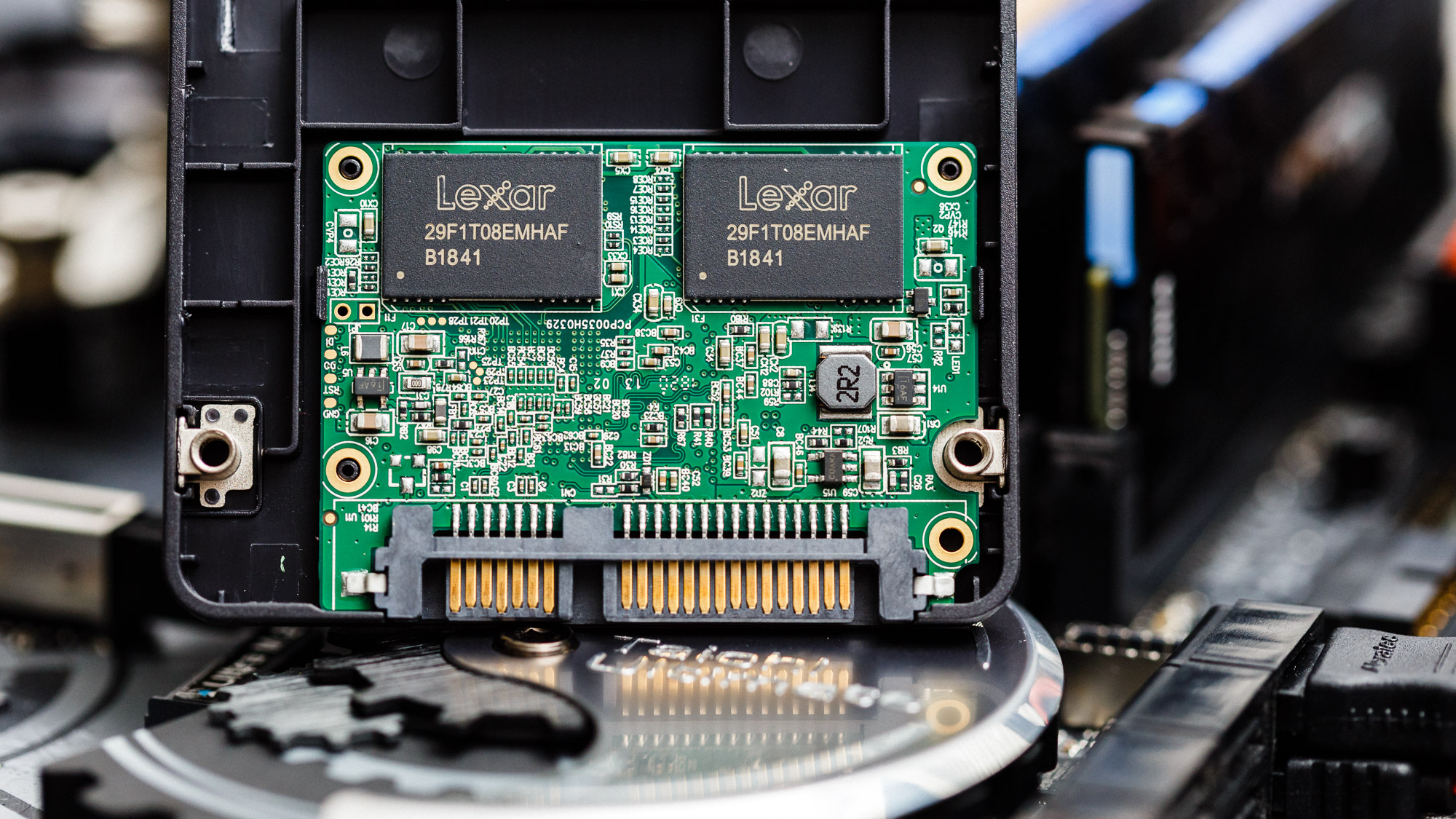
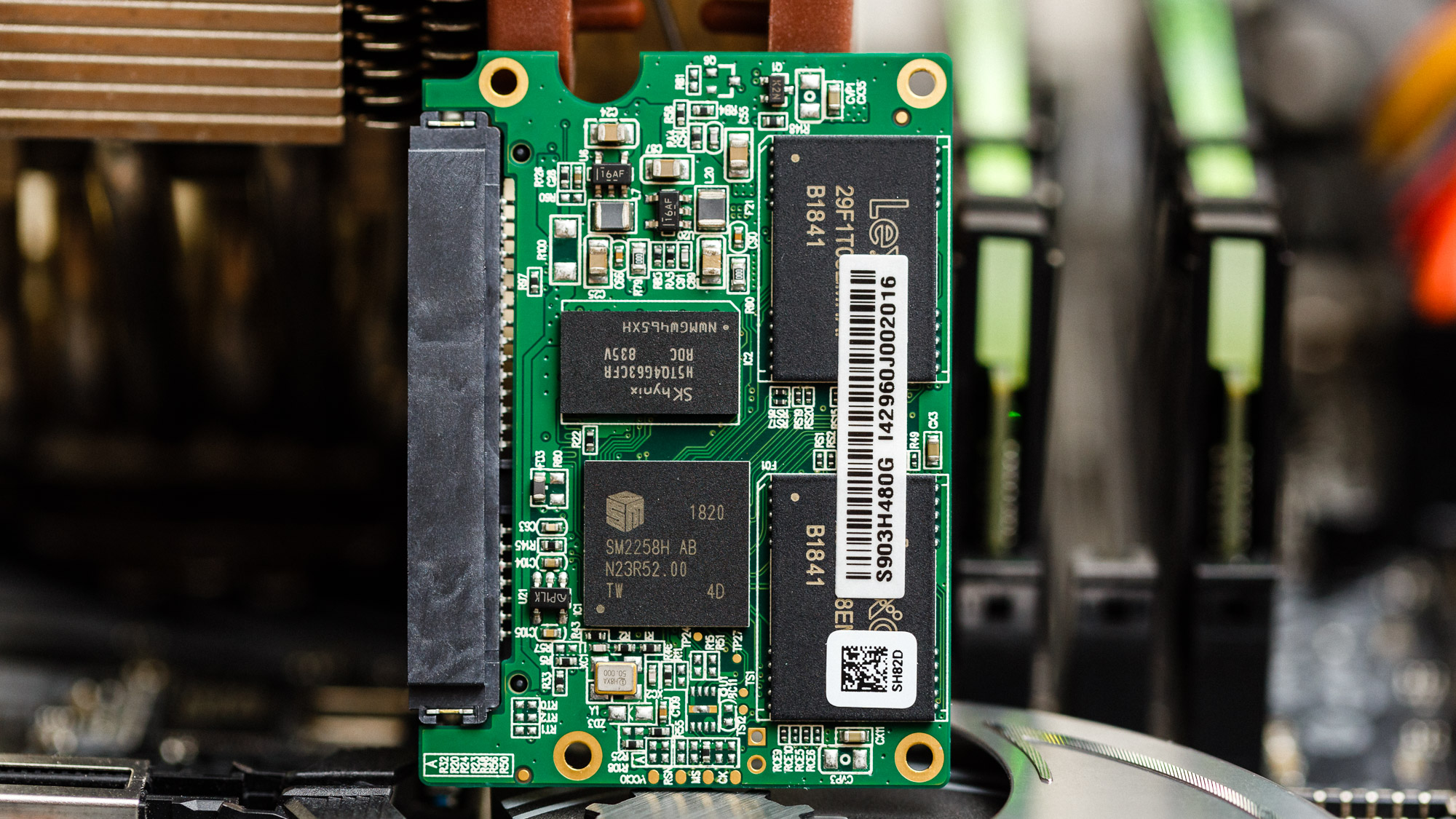
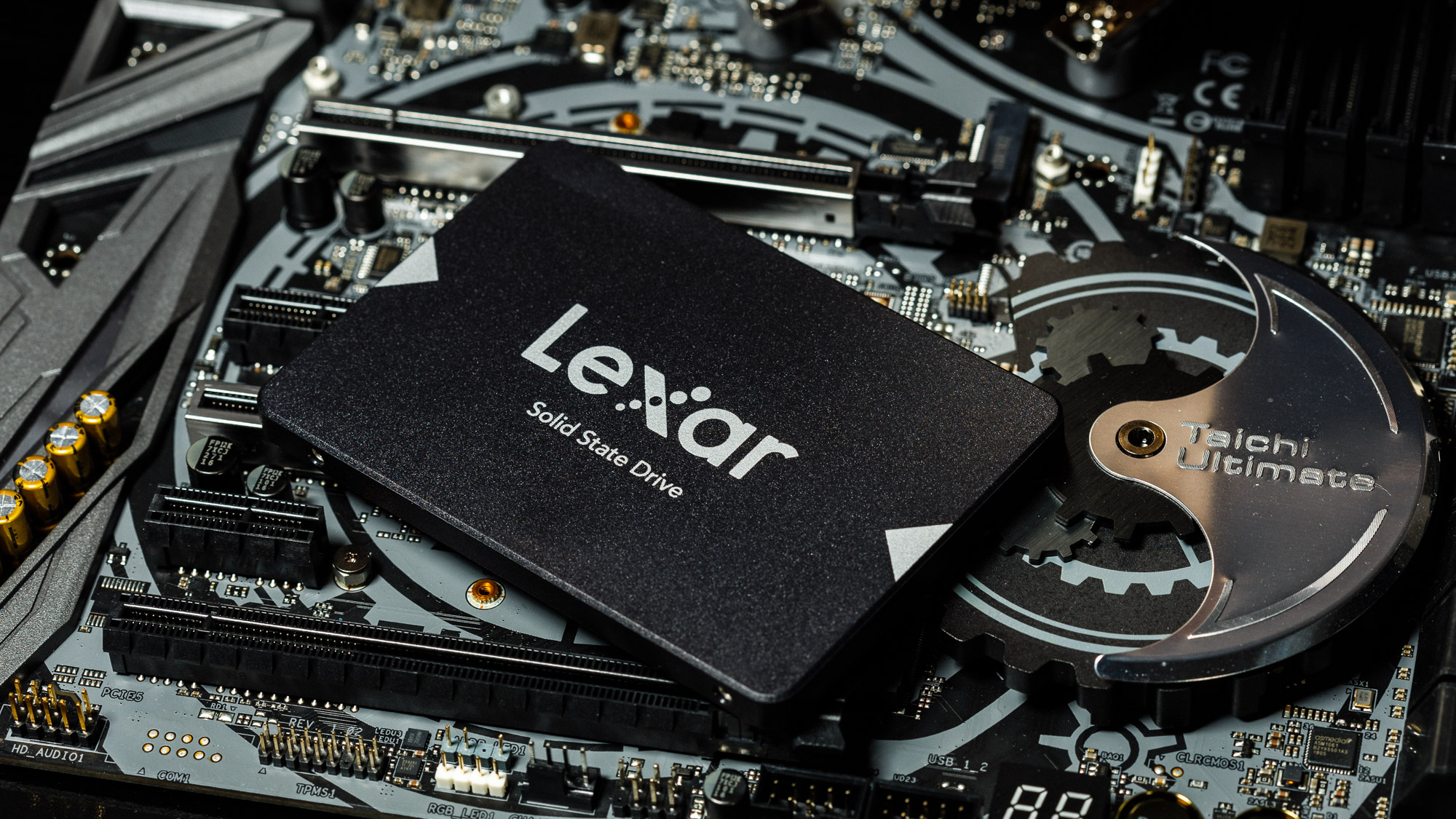
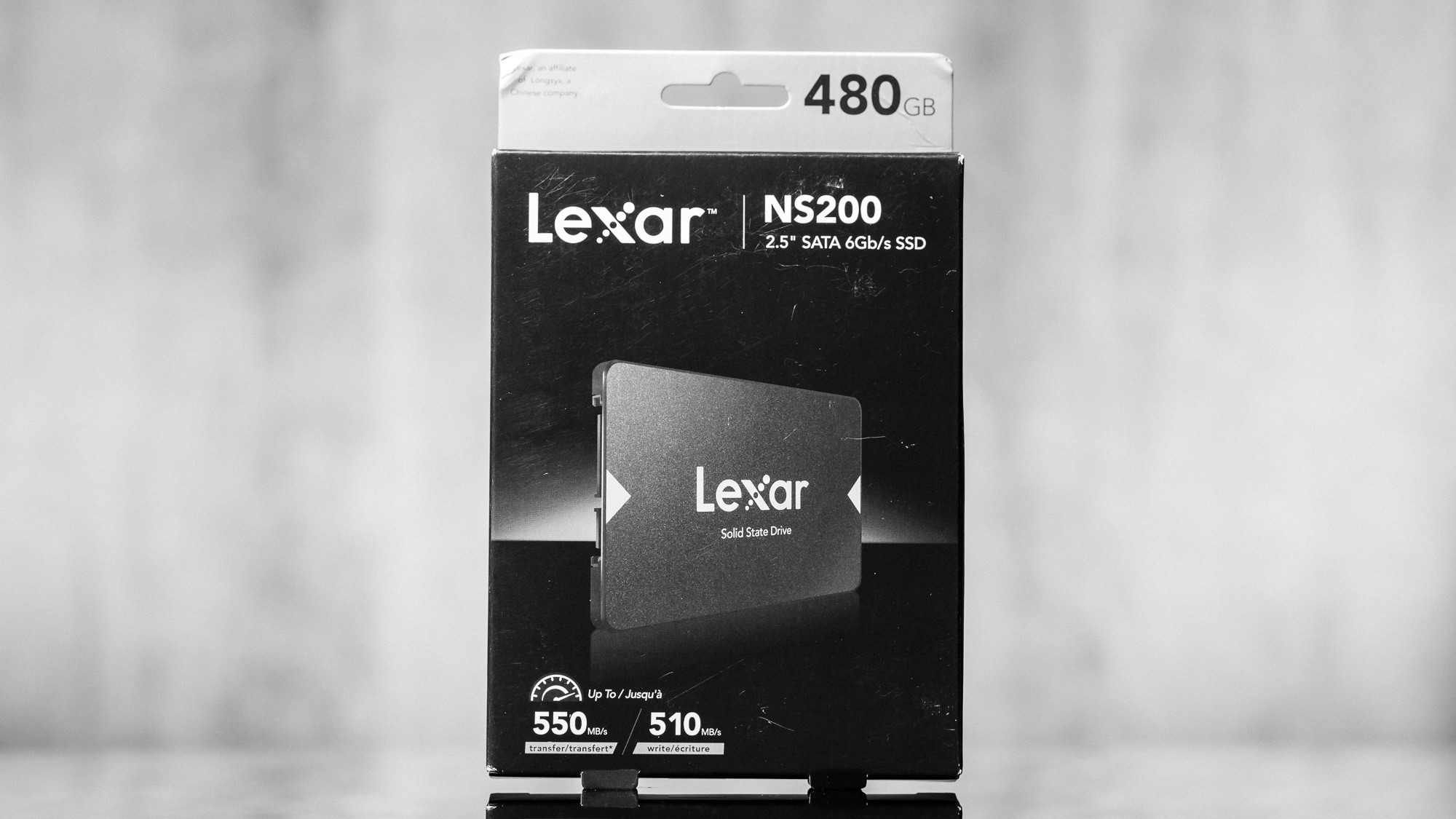

Tasking the drive with some applications we can see that the NS200 isn’t quite as fast as the competitors and it falls into 5th place here. It is almost as fast as the MX500 in this instance, but it can’t keep up with the likes of the Samsung 860 EVO if you are looking for one of the best performing SATA SSDs out. It is still light-years ahead of a standard HDD, however.
Get Tom's Hardware's best news and in-depth reviews, straight to your inbox.
SYSmark 2014 SE
Like PCMark, SYSmark uses real applications to measure system performance. SYSmark takes things much further, however. It utilizes fourteen different applications to run real workloads with real data sets to measure how overall system performance impacts the user experience. BAPCo's SYSmark 2014 SE installs a full suite of applications for its tests, which includes Microsoft Office, Google Chrome, Corel WinZip, several Adobe software applications, and GIMP. That also makes it a great test to measure the amount of time it takes to install widely-used programs after you install a fresh operating system.

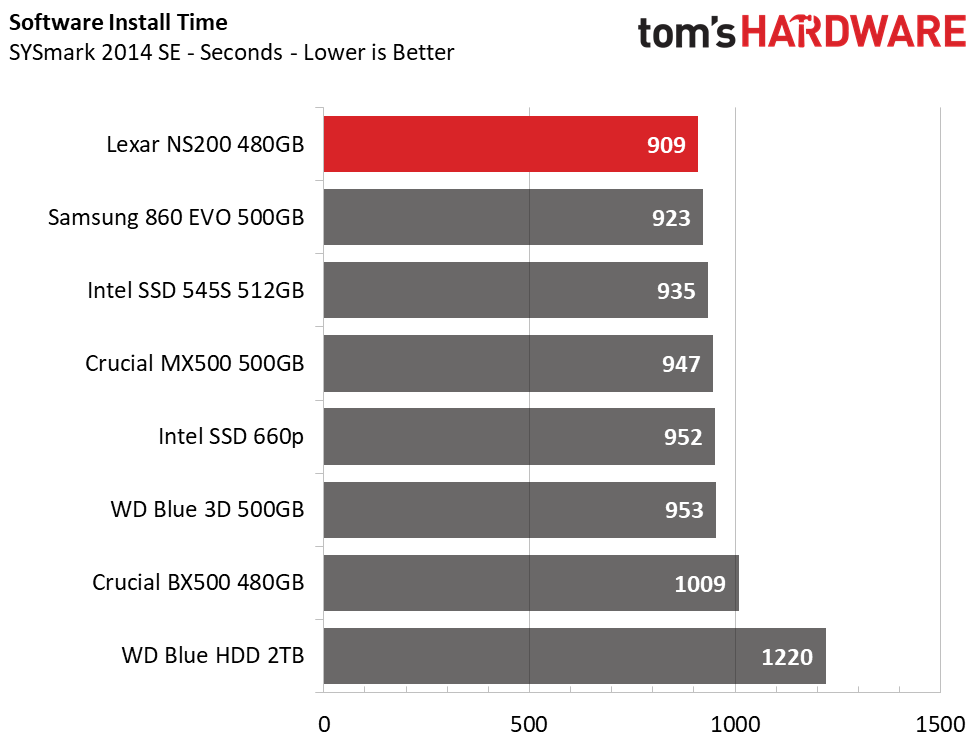
Lexar’s NS200 was able to install the software suite at a rapid pace, faster than any other SSD in our comparison pool. After running the benchmark, the NS200 attained a responsiveness score of 1607 points, which nearly matches the Crucial MX500, but again, Samsung and Intel are in the lead with slightly better performance.
Synthetic Testing - ATTO
ATTO is a simple and free application that SSD vendors commonly use to assign sequential performance specifications to their products. It also gives us insight into how the device handles different file sizes.

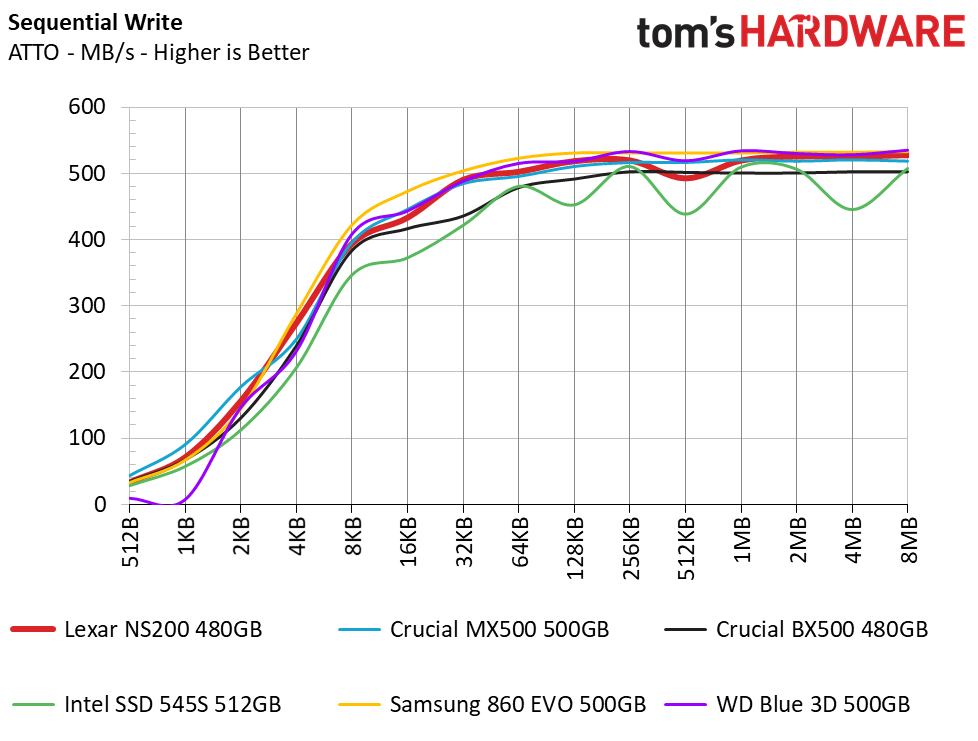
Sequential performance falls in line with the competition across the various file sizes tested. In ATTO the NS200 maxes out at 564 / 527 MB/s read/write.
Synthetic Testing - CrystalDiskMark
CrystalDiskMark (CDM) is a simple and easy to use file size benchmarking tool.
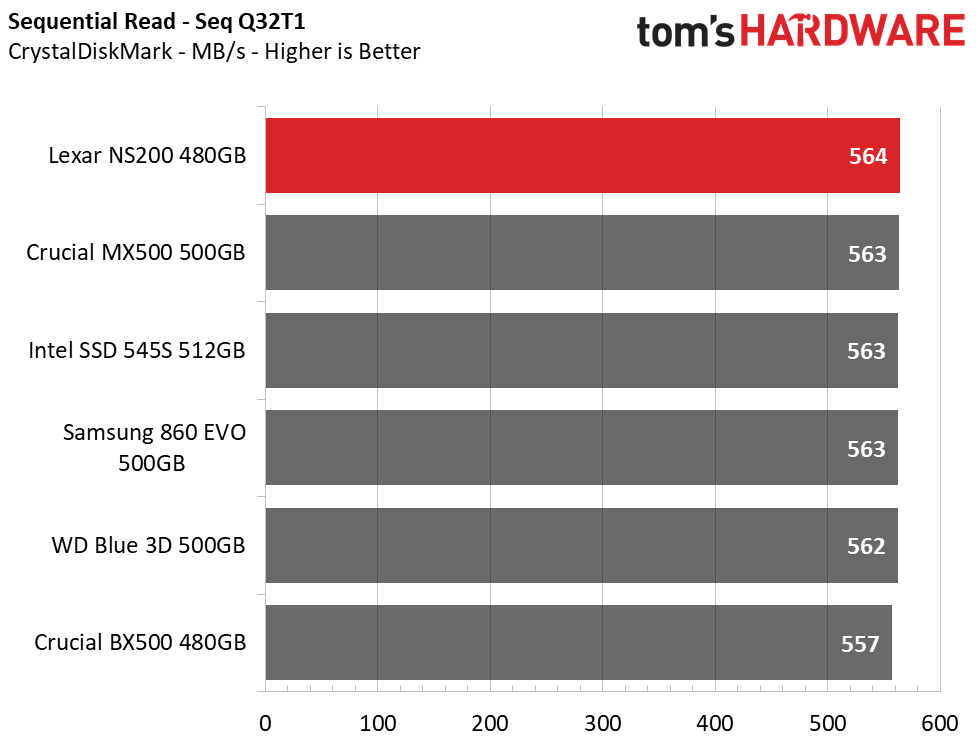

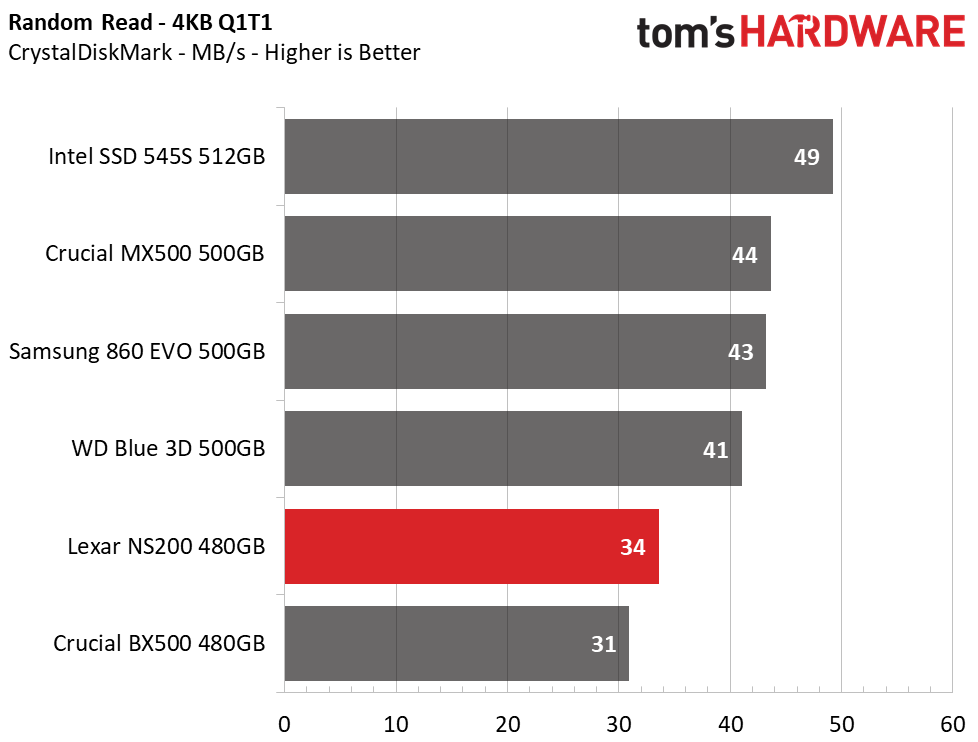
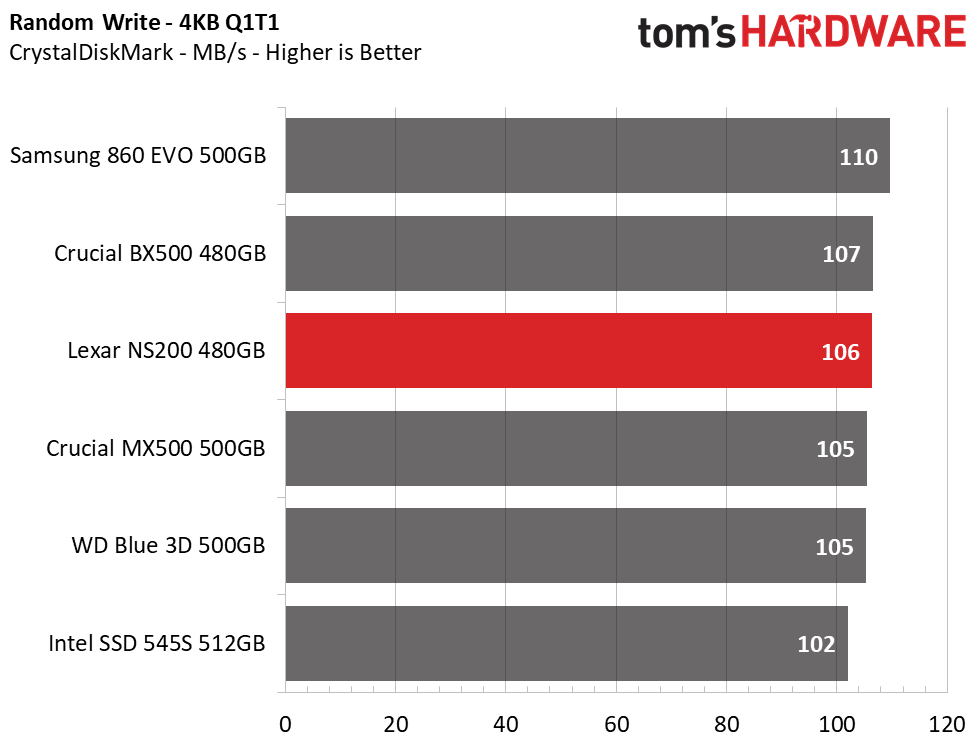
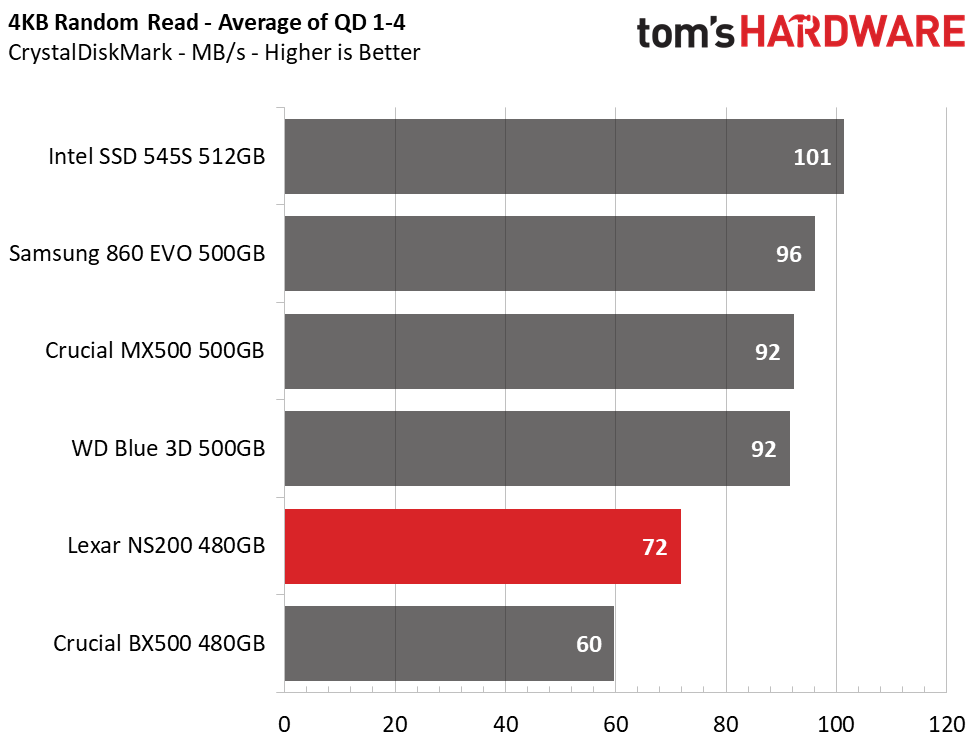

Like its performance in ATTO, Lexar’s NS200 delivers sequential performance of over 560 /520 MBps read/write, which is similar to the competition. Its 4K random performance is a little weaker, however. At a QD of 1, it delivers 34 MBps read and 106 MBps write. While write performance is on par with the rest, read performance lags a bit which is why we saw slightly lower application performance in our test suites. Still, it is much better than the Crucial’s BX500’s scores, especially when averaging out QDs 1-4.
Sustained Sequential Write Performance
Official write specifications are only part of the performance picture. Most SSD makers implement a pseudo-SLC cache buffer, which is a fast area of SLC-programmed flash that absorbs incoming data. Sustained write speeds can suffer tremendously once the workload spills outside of the pSLC cache and into the "native" TLC or QLC flash. We use iometer to hammer the SSD with sequential writes for 15 minutes to measure both the size of the pSLC buffer and performance after the buffer is saturated.
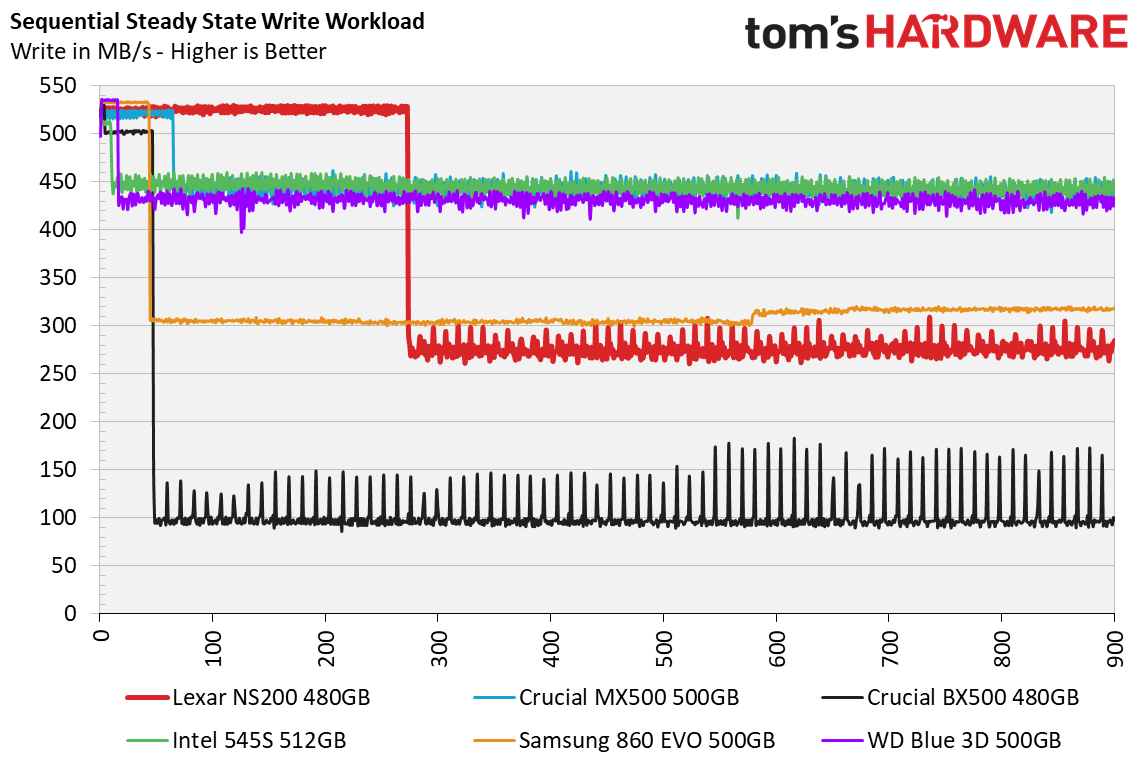

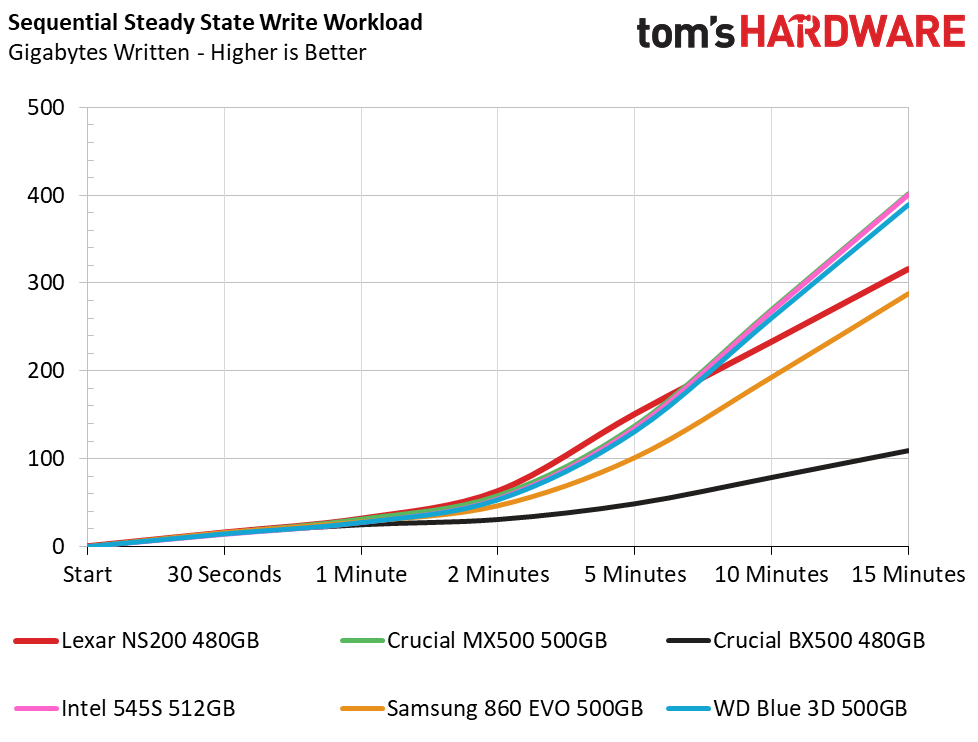
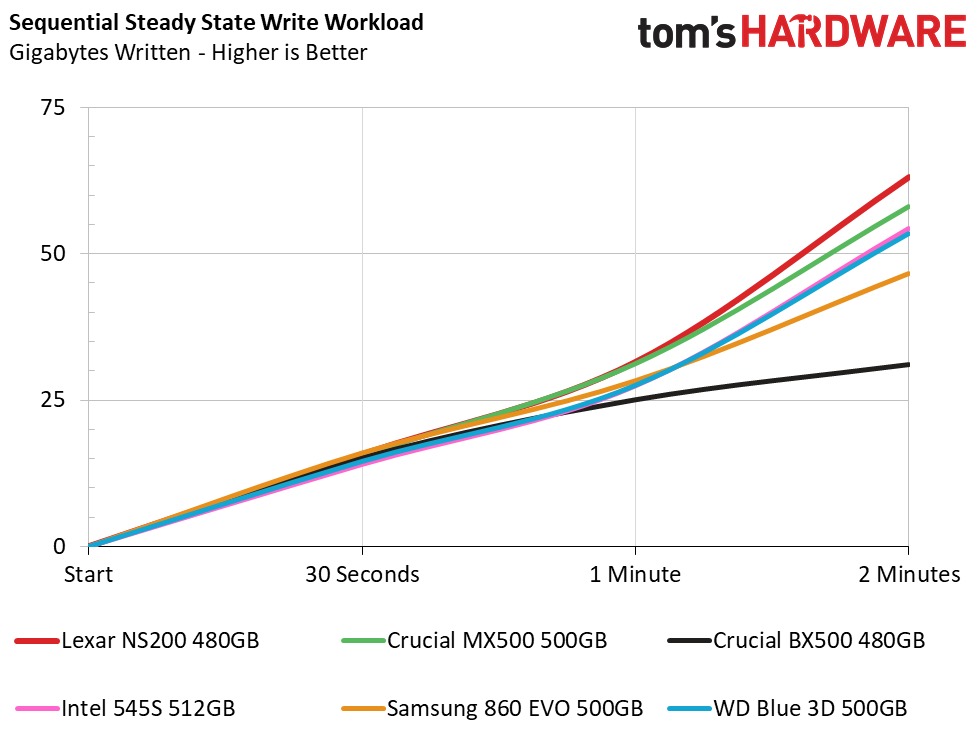

Like almost every SSD out these days, the NS200 features a pSLC cache. Fortunately, this cache is large and dynamic. After writing 143GB of data, the buffer filled and sustained write performance degraded to an average of 275 MBps. Because the cache is so large and dynamic, sustained performance takes a hit compared to that of the MX500 or other competitors which feature smaller caches for improved consistency. Still, this is plenty of performance for most home users that task the drive small write bursts throughout the day rather than large sequential transfers.
Power Consumption
We use the Quarch HD Programmable Power Module to gain a deeper understanding of power characteristics. Idle power consumption is a very important aspect to consider, especially if you're looking for a new drive for your laptop.
Some SSDs can consume watts of power at idle while better-suited ones sip just milliwatts. Average workload power consumption and max consumption are two other aspects of power consumption, but performance-per-watt is more important. A drive might consume more power during any given workload, but accomplishing a task faster allows the drive to drop into an idle state faster, which ultimately saves power.
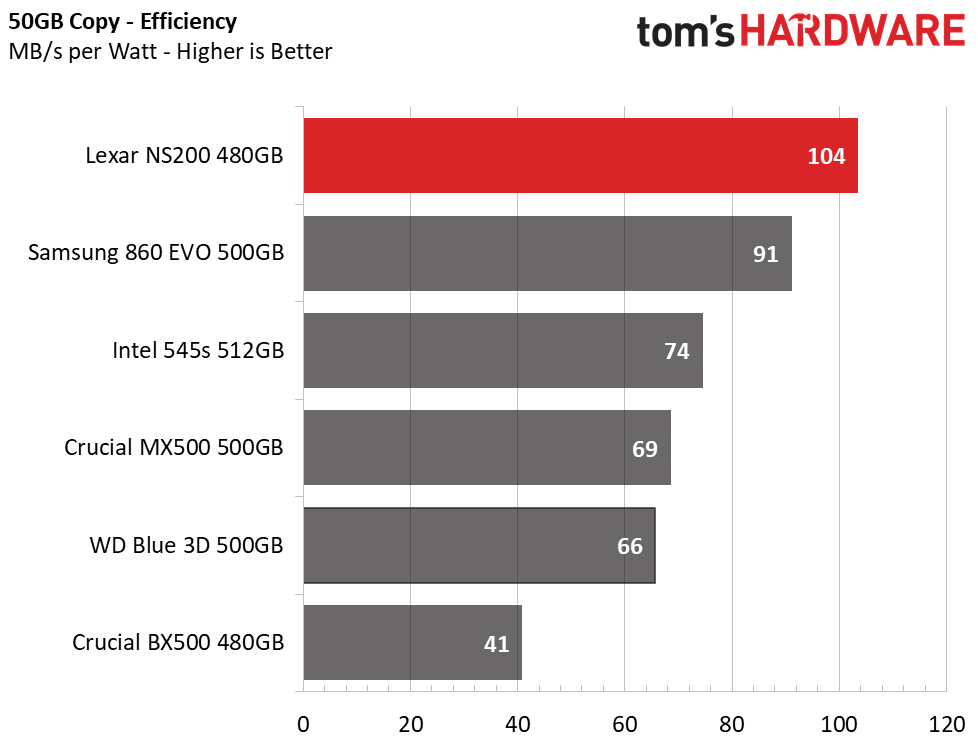
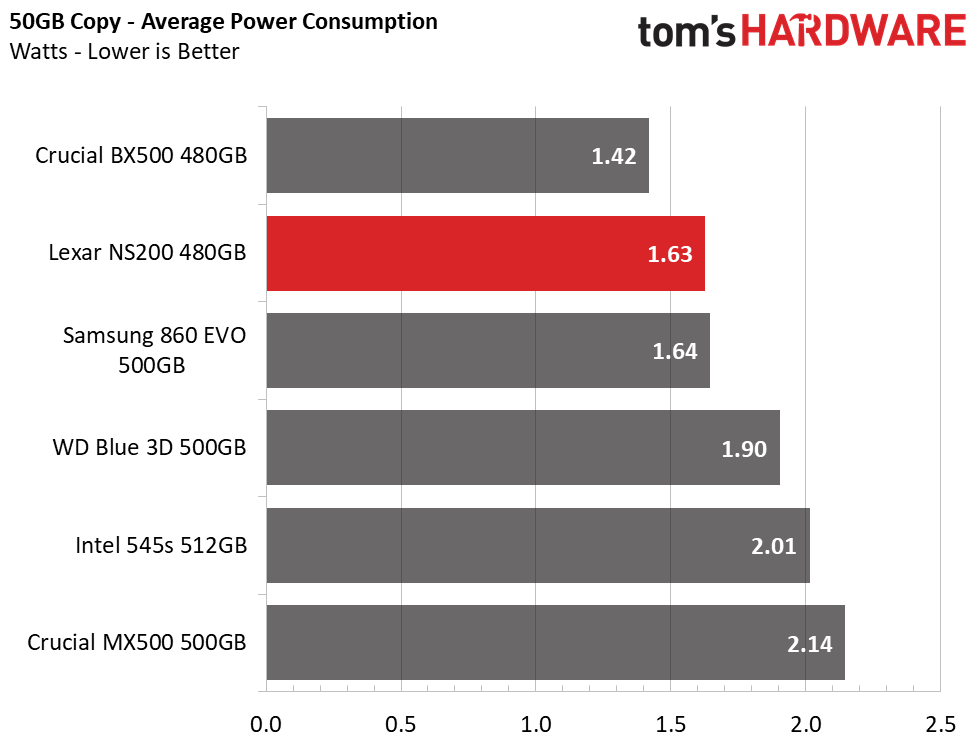
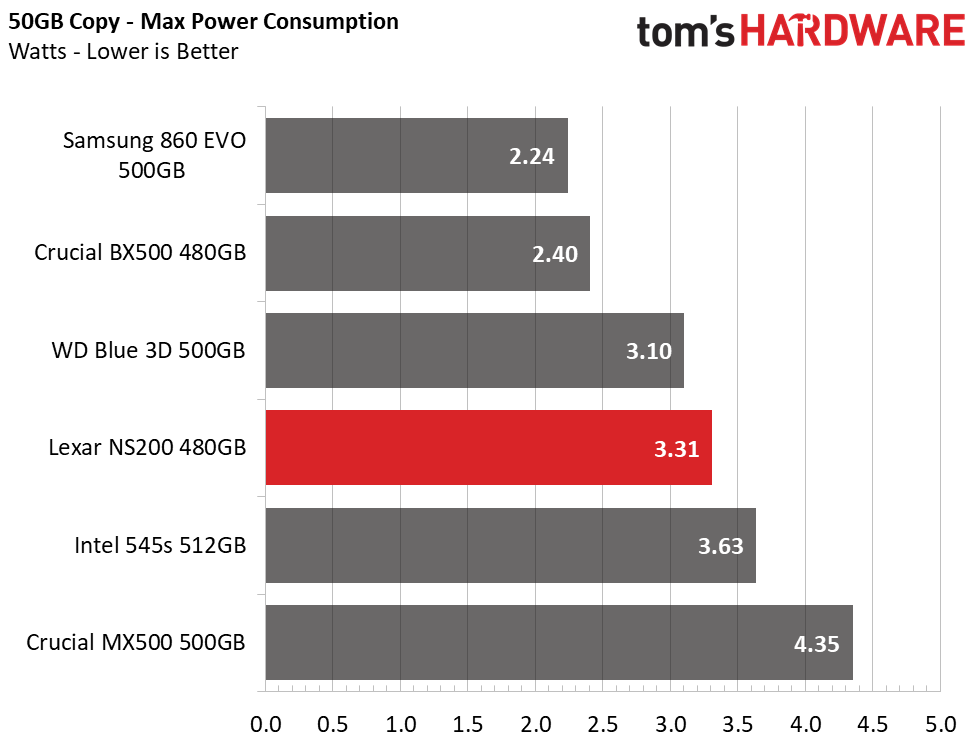
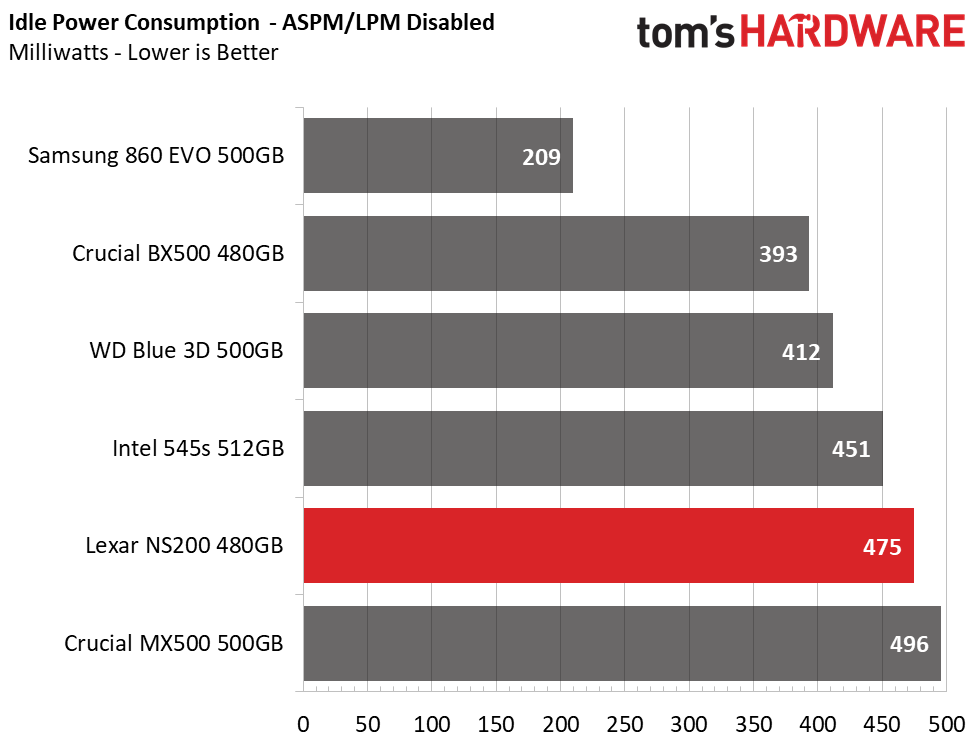

The NS200’s power consumption is very well managed. Averaging 1.63W and hitting a max of just 3.31W during our 50GB transfer, it scores the highest on our efficiency chart. It also consumes just 51mW when at idle with Link Power Management enabled. That number grows to under half a watt when disabled, but it still beats the MX500’s consumption results.
MORE: Best SSDs
MORE: How We Test HDDs And SSDs
MORE: All SSD Content

Sean is a Contributing Editor at Tom’s Hardware US, covering storage hardware.
